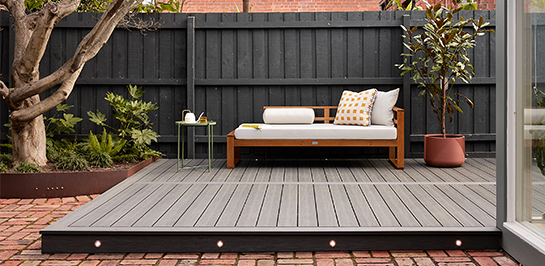How Hot Does Composite Decking Get?
Composite Decking – How hot does it get?
The Australian sun can be unforgiving, so when installing a new deck, how hot your new deck could become is a variable that many people consider.
To help people understand this, we tested composite decking against timber decking (raw, oiled and painted) to see how they compare when left out for a full day in the Australian sun.
In this article, we share our findings from this experiment to see how the Australian sun affects composite and timber decking.
The Experiment
In composites, we tested four of the Ekodeck Designer Series boards (Leatherwood, Backbeach, Alpine Ash and Riverbank Red), as well as Greystone in the Ekodeck Classic range.
The hardwoods we tested were merbau and spotted gum (both raw and oiled), as well as pine (raw and painted Colorbond Monument).
- To test the surface temperature of the boards, a FLUKE 63 IR thermometer gun was used, with an accuracy of ±<1˚C.
- The test frame (see below) was outside in full sun on a clear, 29°c, sunny day.
- Surface temperatures of each board were taken every hour from 9am to 4pm. Note there was cloud cover at 2pm.
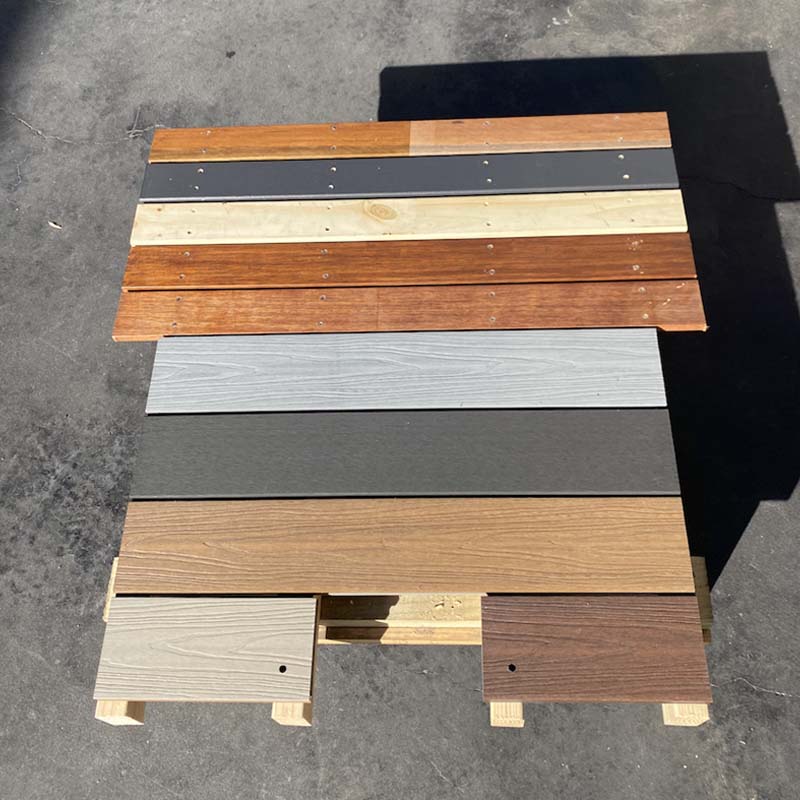
The Observations
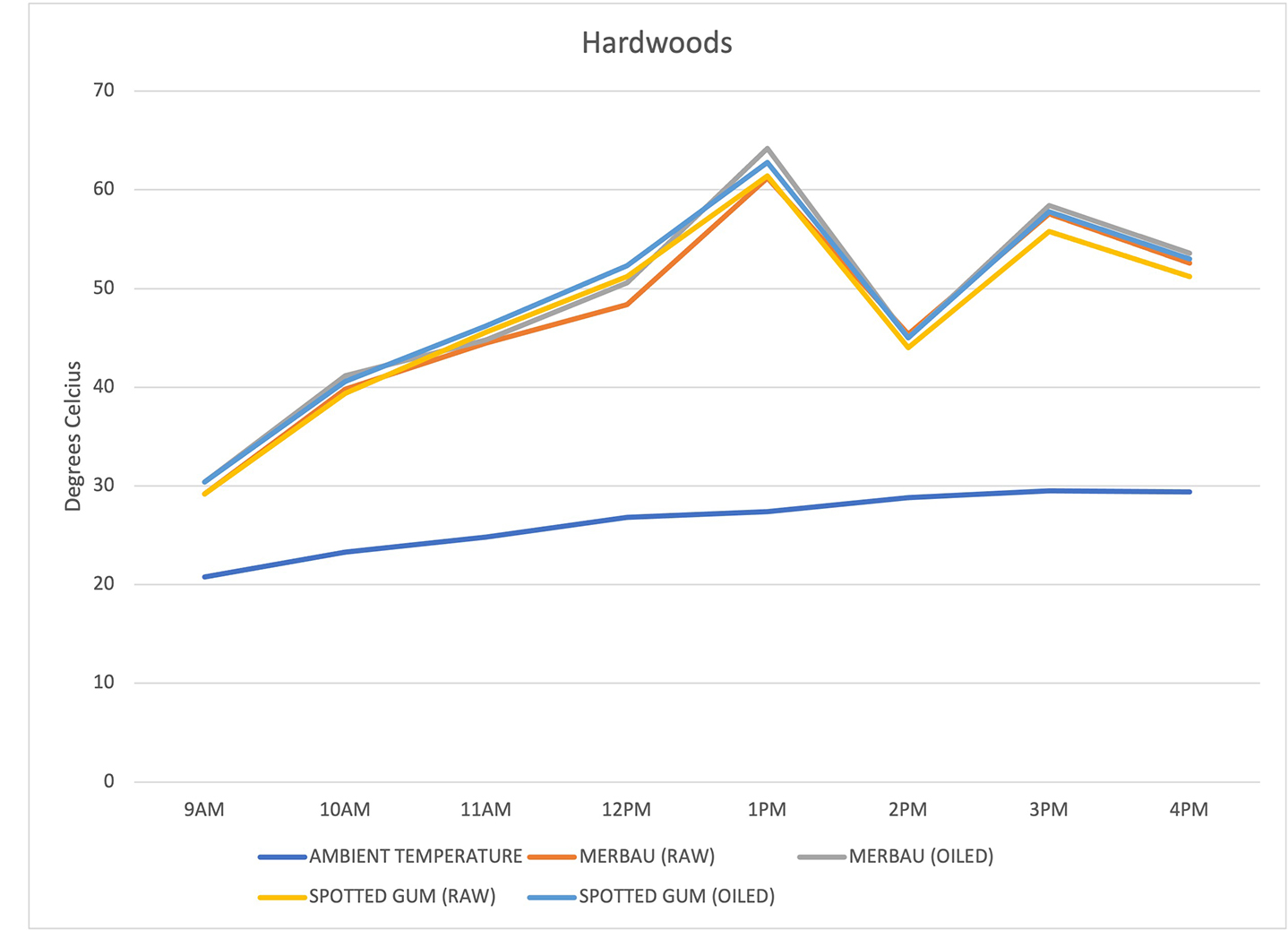
Hardwoods
Oiled surface temperatures are generally higher than the equivalent raw timbers, but failing to oil or seal hardwood decking, significantly decreases the longevity of the material.
Constant exposure to UV, especially in the Australian climate, results in hardwoods greying off, splintering, and becoming especially susceptible to rot.
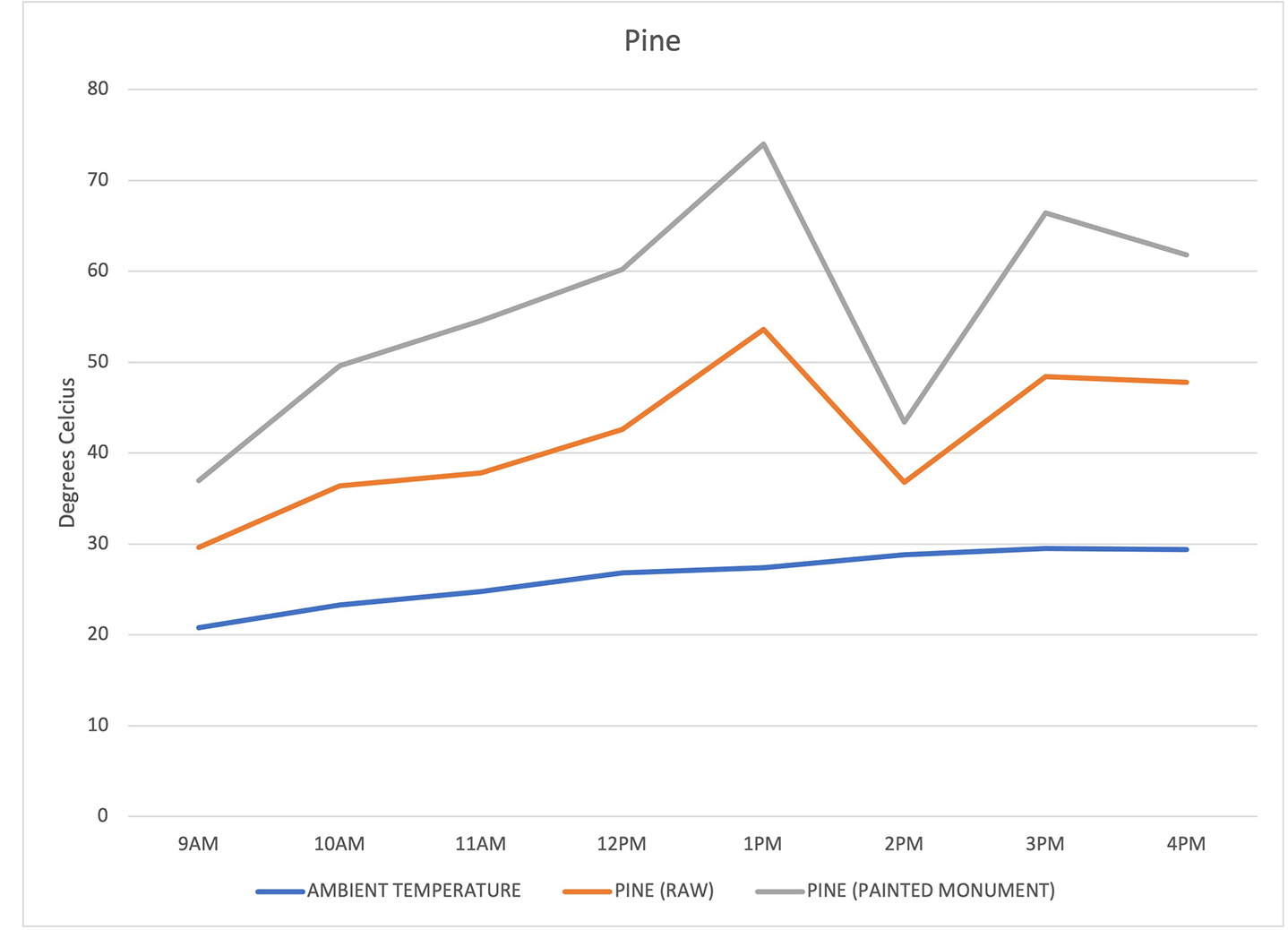
Pine
Unsurprisingly, the raw pine recorded the lowest surface temperature of all the samples, as this board was the lightest colour.
Due to its nature as a softwood, pine is easily damaged, and it is not known for its longevity when directly exposed to the elements. To extend the life of pine decking, painting it is often the answer.
One of the most popular colours to paint decking at the moment is Colorbond Monument, which recorded the highest surface temperature of all the boards.
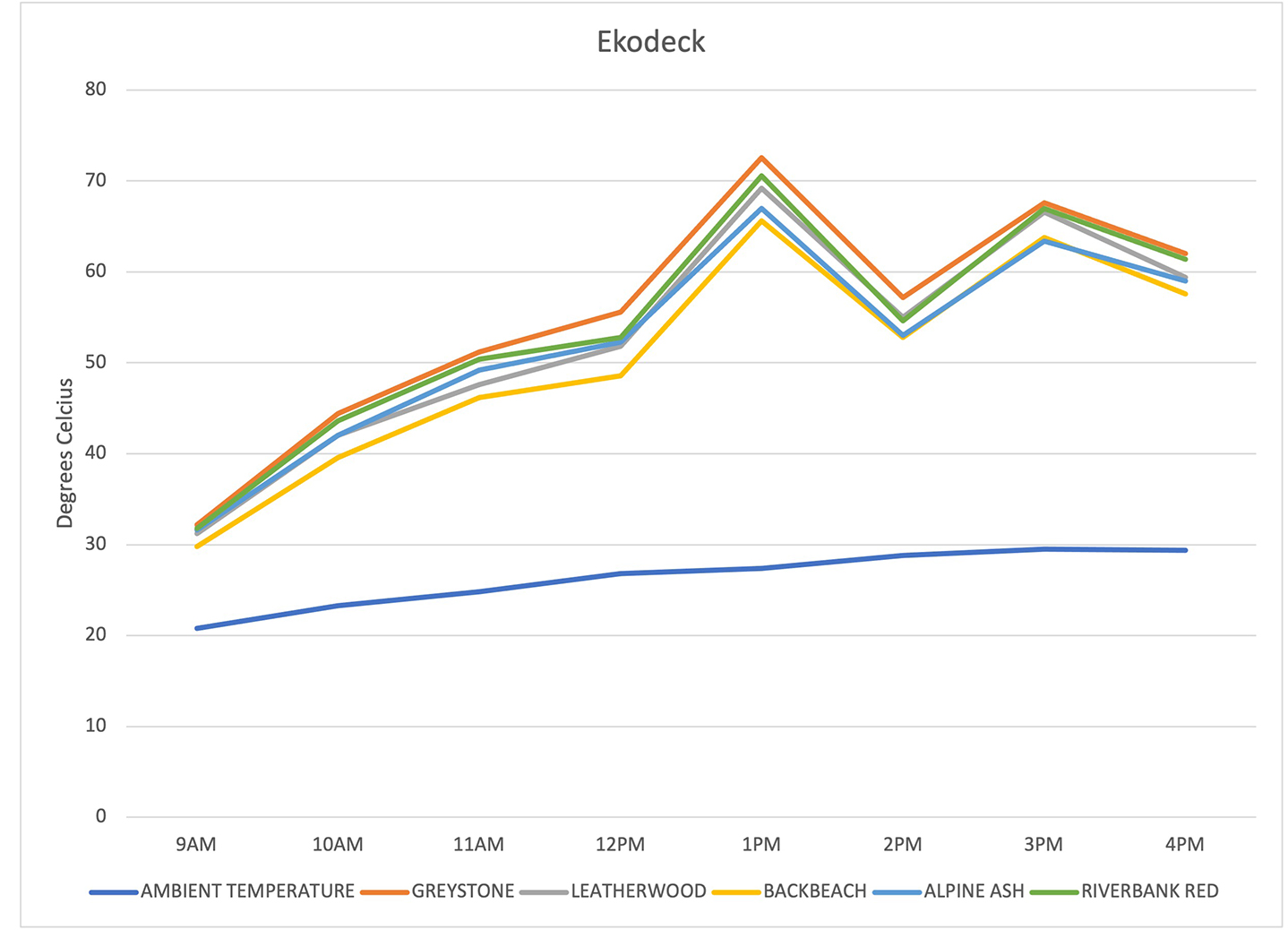
Ekodeck
Ekodeck, being a composite product containing approximately 45% recycled plastic, will conduct and retain heat more readily than raw timber.
Looking at the graph, we can see that Greystone recorded the highest surface temperature of all the Ekodeck, unsurprising since it is the darkest colour available.
In contrast, Backbeach (being the lightest colour in the Ekodeck range) recorded the lowest surface temperature of all the Ekodeck.
The other colours tested all sit in the middle of the Greystone and Backbeach.
The Findings
Overall, the Ekodeck boards were not too far off the surface temperatures of the equivalent timber boards, varying between 4 – 7 degrees hotter.
Generally, the surface temperature of a decking material depends on how light or dark the board is, with both timber and composite.
Looking at solely the timber boards, failing to oil or paint timber decking will result in cooler temperatures, but premature deterioration of timber decking. On the other hand, oiling or painting timber will keep it protected from the elements but increases surface temperatures to be comparable to composite.
While composite may be slightly hotter, it will not deteriorate in full sun, nor will it need coatings or sealing to keep it protected from the elements. Comparatively, timber in full sun will deteriorate, crack, warp and splinter quickly, especially if not oiled or sealed in some way.
Conclusion
No matter what material is chosen, the darker the colour of your decking, if installed in a full north/western sun area, expect it to be hot on a hot day.
If you have any queries or questions – don’t hesitate to reach out or request a sample.
We’re always happy to help!
You may also like

Get started with Ekodeck
Experience our entire colour range for yourself. We deliver a sample kit complete with each colour direct to your door.
